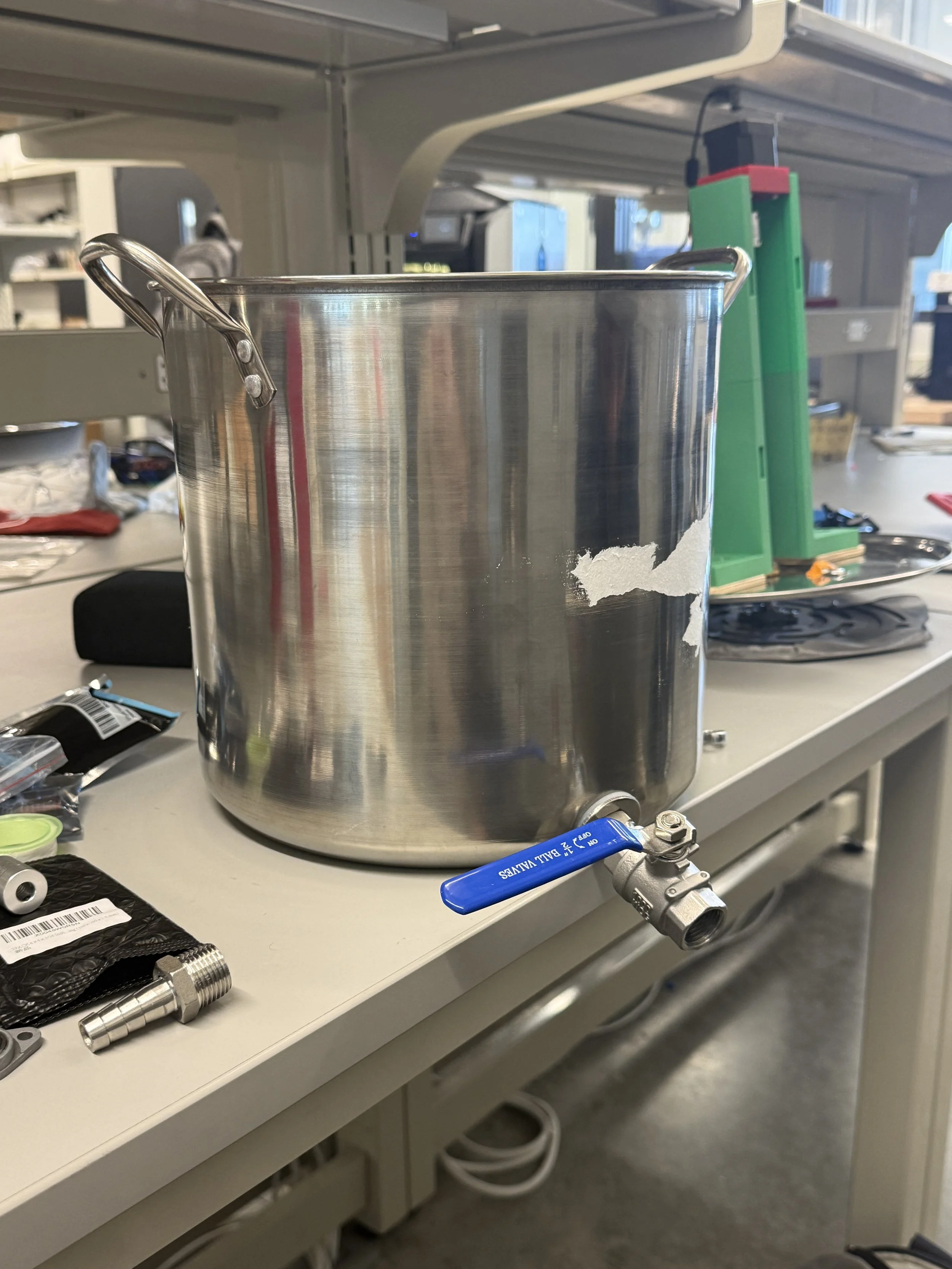What is EPICS?
As a student at Purdue University, I had to take a course called EPICS. Its purpose is for students to collaborate with companies and engineer a solution targeting the partner’s needs. During my freshman year at Purdue, I designed a wooden commercial sign and a guide rail system for our Paneer Maker Machine.
Paneer Maker Guide Rail System
I was appointed Design Lead for our Paneer machine project, which put me in charge of generating ideas, creating designs, and building working prototypes for key systems. One of my main responsibilities was to design a mechanism that guided the linear rod and motor assembly to move straight down and back up smoothly and reliably.
V-Guide System and Prototyping
This guide uses a V-notch alignment system to enable smooth vertical motion. The V-shaped design allows for simple and precise movement. For this project, tolerances were crucial, but I had a bit of an advantage. I’ve been using a Bambu Labs printer for the past couple of years, so I’m familiar with its abilities and limitations. Fortunately, the same Bambu X1 Carbon was available in our makerspace, which saved a lot of time during prototyping. I already knew that the X1 Carbon typically requires a 0.2 mm clearance for sliding parts to move freely, which helped the prototyping part of the design process.
Because the rails were too long to print vertically, I split them in half and created plugs to connect both sections. However, this introduced a new problem, which was that both halves needed to be perfectly aligned for the motor housing to slide down smoothly. To solve this, I designed brackets that maintained a fixed distance between the two sides, which ensured proper alignment.
Another issue came from the non-flat lid of the pot, which caused the bottoms of both rails to push inward, preventing the motor housing from traveling all the way down. We fixed this by placing two pieces of wood underneath the rails for more support. Looking back, I could have also integrated support structures to make the rails more rigid and reduce flexing.
From Idea to Execution
Sign Replacement
Designed In Fall 2024
About
For this project, we had to create a new yard sign for Habitat for Humanity. They keep yard signs on their properties to advertise their business. They wanted something sturdy, cost-effective, and able to advertise their home sites. As the design manager, I made sure our design met their needs while also looking clean and presentable.
We had two designs, one from me and one from my teammate. After going through both options, our partner chose mine, and we got to work building it. They loved the design, and our professor gave us the green light to start working on a prototype. I learned a lot from this project such as the importance of documenting our process from concept to final product.







